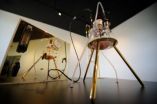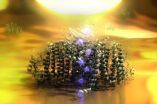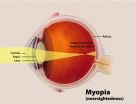(Press-News.org) You can thank your parents for your smarts—or at least some of them. Psychologists have long known that intelligence, like most other traits, is partly genetic. But a new study led by psychological scientist Christopher Chabris reveals the surprising fact that most of the specific genes long thought to be linked to intelligence probably have no bearing on one's IQ. And it may be some time before researchers can identify intelligence's specific genetic roots.
Chabris and David Laibson, a Harvard economist, led an international team of researchers that analyzed a dozen genes using large data sets that included both intelligence testing and genetic data.
In nearly every case, the researchers found that intelligence could not be linked to the specific genes that were tested. The results are published online in Psychological Science, a journal of the Association for Psychological Science.
"In all of our tests we only found one gene that appeared to be associated with intelligence, and it was a very small effect. This does not mean intelligence does not have a genetic component. It means it's a lot harder to find the particular genes, or the particular genetic variants, that influence the differences in intelligence," said Chabris.
It had long been believed, on the basis of studies of identical and fraternal twins, that intelligence was a heritable trait. The new research affirms that conclusion. But older studies that picked out specific genes had flaws, Chabris said, primarily because of technological limits that prevented researchers from probing more than a few locations in the human genome to find genes that affected intelligence.
"We want to emphasize that we are not saying the people who did earlier research in this area were foolish or wrong," Chabris said. "They were using the best technology and information they had available. At the time, it was believed that individual genes would have a much larger effect — they were expecting to find genes that might each account for several IQ points."
Chabris said additional research is needed to determine the exact role genes play in intelligence.
"As is the case with other traits, like height, there are probably thousands of genes and their variants that are associated with intelligence," he said. "And there may be other genetic effects beyond the single gene effects. There could be interactions among genes, or interactions between genes and the environment. Our results show that the way researchers have been looking for genes that may be related to intelligence — the candidate gene method — is fairly likely to result in false positives, so other methods should be used."
###
For more information about this study, please contact: Christopher F. Chabris at chabris@gmail.com.
The APS journal Psychological Science is the highest ranked empirical journal in psychology. For a copy of the article "Most Reported Genetic Associations With General Intelligence Are Probably False Positives" and access to other Psychological Science research findings, please contact Anna Mikulak at 202-293-9300 or amikulak@psychologicalscience.org.
Intelligence is in the genes, but where?
2012-10-02
ELSE PRESS RELEASES FROM THIS DATE:
Superman-strength bacteria produce gold
2012-10-02
EAST LANSING, Mich. — At a time when the value of gold has reached an all-time high, Michigan State University researchers have discovered a bacterium's ability to withstand incredible amounts of toxicity is key to creating 24-karat gold.
"Microbial alchemy is what we're doing – transforming gold from something that has no value into a solid, precious metal that's valuable," said Kazem Kashefi, assistant professor of microbiology and molecular genetics.
He and Adam Brown, associate professor of electronic art and intermedia, found the metal-tolerant bacteria Cupriavidus ...
Solar cell consisting of a single molecule
2012-10-02
This press release is available in German.
A team of scientists, led by Joachim Reichert, Johannes Barth, and Alexander Holleitner (Technische Universitaet Muenchen, Clusters of Excellence MAP and NIM), and Itai Carmeli (Tel Aviv University) developed a method to measure photocurrents of a single functionalized photosynthetic protein system. The scientists could demonstrate that such a system can be integrated and selectively addressed in artificial photovoltaic device architectures while retaining their biomolecular functional properties. The proteins represent light-driven, ...
Specialty contact lenses may one day help halt the progression of nearsightedness in children
2012-10-02
WASHINGTON, Oct. 2—Nearsightedness, or myopia, affects more than 40 percent of people in the U.S. and up to 90 percent of children in some parts of Asia. The problem begins in childhood and often progresses with age. Standard prescription lenses can correct the defocus but do not cure nearsightedness, and do not slow progression rates as children grow. But recent experimental work by biomedical scientist David Troilo and colleagues at the State University of New York (SUNY) College of Optometry in New York City supports the development of a potential cure for myopia by ...
3-D medical scanner: New handheld imaging device to aid doctors on the 'diagnostic front lines'
2012-10-02
WASHINGTON, Oct. 2, 2012—In the operating room, surgeons can see inside the human body in real time using advanced imaging techniques, but primary care physicians, the people who are on the front lines of diagnosing illnesses, haven't commonly had access to the same technology – until now. Engineers from the University of Illinois at Urbana-Champaign (UIUC) have created a new imaging tool for primary care physicians: a handheld scanner that would enable them to image all the sites they commonly examine, and more, such as bacterial colonies in the middle ear in 3-D, or monitor ...
Sea Education Association tall ship departs on major marine debris research cruise
2012-10-02
(San Diego, California – October 2, 2012) A tall ship owned and operated by Sea Education Association (SEA) will depart port tomorrow on a research expedition dedicated to examining the effects of plastic marine debris, including debris generated by the 2011 Japanese tsunami, in the ocean ecosystem.
During their 37-day cruise, the crew of the Woods Hole, Mass.-based sailing oceanographic research vessel Robert C. Seamans will explore a region between San Diego and Honolulu, popularly dubbed the "Great Pacific Garbage Patch", where high concentrations of plastic debris ...
RI Hospital: Differences in diagnosis, treatment of nonepileptic seizures in US, Chile
2012-10-02
PROVIDENCE, R.I. – Epileptic and psychogenic nonepileptic seizures (PNES) may look similar, but actually have different causes and treatments. Up to 20 percent of patients diagnosed with epilepsy actually have PNES, which are not treated by antiepileptic drugs (AEDs). According to a new study by Rhode Island Hospital researcher W. Curt LaFrance Jr., M.D., M.P.H., director of neuropsychiatry and behavioral neurology, increasing access to video electroencephalography (video-EEG) may aid in distinguishing between epilepsy and PNES. The study is published online in advance ...
Gene responsible for many spontaneous breast cancers identified
2012-10-02
BETHESDA, MD – October 2, 2012 -- Cancerous tumors contain hundreds of mutations, and finding these mutations that result in uncontrollable cell growth is like finding the proverbial needle in a haystack. As difficult as this task is, it's exactly what a team of scientists from Cornell University, the University of North Carolina, and Memorial Sloan-Kettering Cancer Center in New York have done for one type of breast cancer. In a report appearing in the journal GENETICS, researchers show that mutations in a gene called NF1 are prevalent in more than one-fourth of all noninheritable ...
Amazonian tribal warfare sheds light on modern violence, says MU anthropologist
2012-10-02
In the tribal societies of the Amazon forest, violent conflict accounted for 30 percent of all deaths before contact with Europeans, according to a recent study by University of Missouri anthropologist Robert Walker. Understanding the reasons behind those altercations in the Amazon sheds light on the instinctual motivations that continue to drive human groups to violence, as well as the ways culture influences the intensity and frequency of violence.
"The same reasons - revenge, honor, territory and jealousy over women - that fueled deadly conflicts in the Amazon continue ...
Manatees reflect quality of health in marine ecosystems, longterm study finds
2012-10-02
FAIRFAX, Va., October 1, 2012—A longterm study conducted by researchers at George Mason University may be a benchmark in determining health threats to marine mammals.
Over ten years of research in Belize was conducted studying the behavioral ecology, life history and health of manatees in an area relatively undisturbed by humankind.
"Manatees are the proverbial 'canaries in the mineshaft,' as they serve as indicators of their environment and may reflect the overall health of marine ecosystems," says Alonso Aguirre, executive director of the Smithsonian-Mason School ...
Adult stem cells change their epigenome to generate new organs
2012-10-02
The team led by Manel Esteller, director of the Cancer Epigenetics and Biology Program in the Bellvitge Biomedical Research Institute (IDIBELL), Professor of Genetics at the University of Barcelona and ICREA researcher, has identified epigenetic changes that occur in adult stem cells to generate different body tissues. The finding is published this week in The American Journal of Pathology.
The genome of every single cell in the human body is the same, regardless of their appearance and function. Therefore the activity of the tissues and organs and its disorders in complex ...



